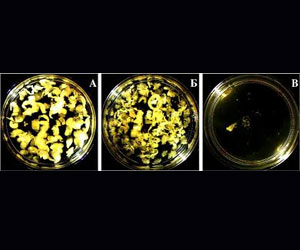- Home
- Editorial
- News
- Practice Guidelines
- Anesthesiology Guidelines
- Cancer Guidelines
- Cardiac Sciences Guidelines
- Critical Care Guidelines
- Dentistry Guidelines
- Dermatology Guidelines
- Diabetes and Endo Guidelines
- Diagnostics Guidelines
- ENT Guidelines
- Featured Practice Guidelines
- Gastroenterology Guidelines
- Geriatrics Guidelines
- Medicine Guidelines
- Nephrology Guidelines
- Neurosciences Guidelines
- Obs and Gynae Guidelines
- Ophthalmology Guidelines
- Orthopaedics Guidelines
- Paediatrics Guidelines
- Psychiatry Guidelines
- Pulmonology Guidelines
- Radiology Guidelines
- Surgery Guidelines
- Urology Guidelines
Ultrasound may soon monitor clot formation for timely thrombolysis

Researchers from the Moscow Institute of Physics and Technology (MIPT) and the Russian National Research Center for Hematology (NRCH) have found a new approach for the prevention of thrombosis.
The study points at the creation of an ultrasonic technique for the monitoring of blood coagulation and thrombi formation inside the human body.
Presently, ultrasonic methods are already used rather widely in the field of thrombosis and hemostasis, for instance, in the diagnostics of deep vein thrombosis, the detection of thrombi in the left atrial appendage and the monitoring of intravascular emboli.
The study revealed the following results:
- The ultrasonic method used enables the reliable registration of blood coagulation and following the fibrinolytic dissolution of the clots. The method facilitates the qualitative evaluation of the efficiency of various fibrinolytic influences and enables the comparison of different fibrinolytic drugs;
- The fibrinolytic resistance of clots formed under flow conditions increases significantly over the first few minutes of their formation;
- An immediate injection of a fibrinolytic drug after the ultrasonic registration of the onset of coagulation is able to prevent the formation of large clots in the experimental system.
In modern clinical practice, thrombolysis is performed when thrombi formed in blood vessels pose a threat to a patient's life. Thrombolytic procedures themselves are associated with a high risk, as they can cause acute bleeding. Sometimes the necessity of thrombolysis appears urgently, for example in myocardial infarction and stroke. In these cases, onset-to-treatment time is a key limitation of thrombolytic therapy efficiency. Therefore, the implementation of a technique for early diagnostics and monitoring of thrombus formation is a matter of great interest.
"We have chosen ultrasound as a method for blood coagulation monitoring since it is noninvasive and allows measurements in deep-lying large blood vessels, in which thrombus formation is most dangerous," says Dmitry Ivlev, an MIPT graduate and a researcher at NRCH.
In the paper published in PLOS ONE, a new approach based on ultrasonic registration of blood coagulation in its early stages has been developed. Continuous ultrasonic monitoring of the blood's aggregate state was performed using the in the vitro blood flow model. An injection of a fibrinolytic drug was performed automatically on the basis of ultrasonic data. The authors have shown that the ultrasonic monitoring technique allows detecting the stage of coagulation at which timely pharmacological intervention leads to a fast and complete dissolution of the fibrin clots being formed in blood flow.
According to the head of the research group, professor Georgy Guria of MIPT's living systems physics department, who also heads a laboratory at NRCH, "due to the progress in the field of compact ultrasonic sensors, our work opens new prospects for creation of wearable devices for timely medical assistance to patients with a high risk of thrombosis."
The results presented in this paper may open prospects for creating portable or even implantable devices, which would be somewhat similar to insulin pumps currently used in clinical practice. By means of ultrasound, such a device could provide not only the monitoring of blood clotting and fibrinolysis but also active control of these processes.

Disclaimer: This site is primarily intended for healthcare professionals. Any content/information on this website does not replace the advice of medical and/or health professionals and should not be construed as medical/diagnostic advice/endorsement or prescription. Use of this site is subject to our terms of use, privacy policy, advertisement policy. © 2020 Minerva Medical Treatment Pvt Ltd